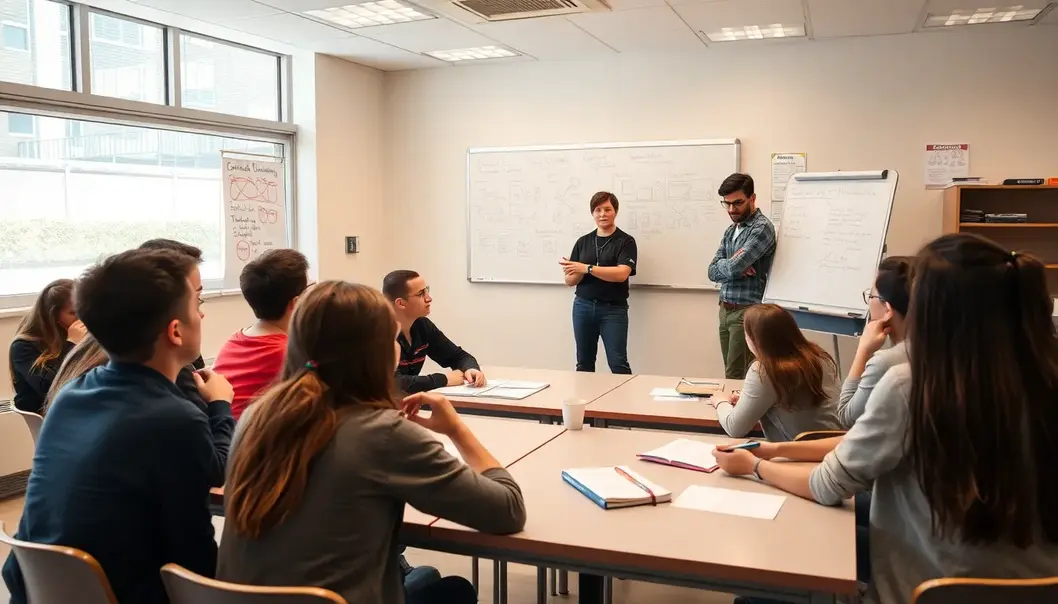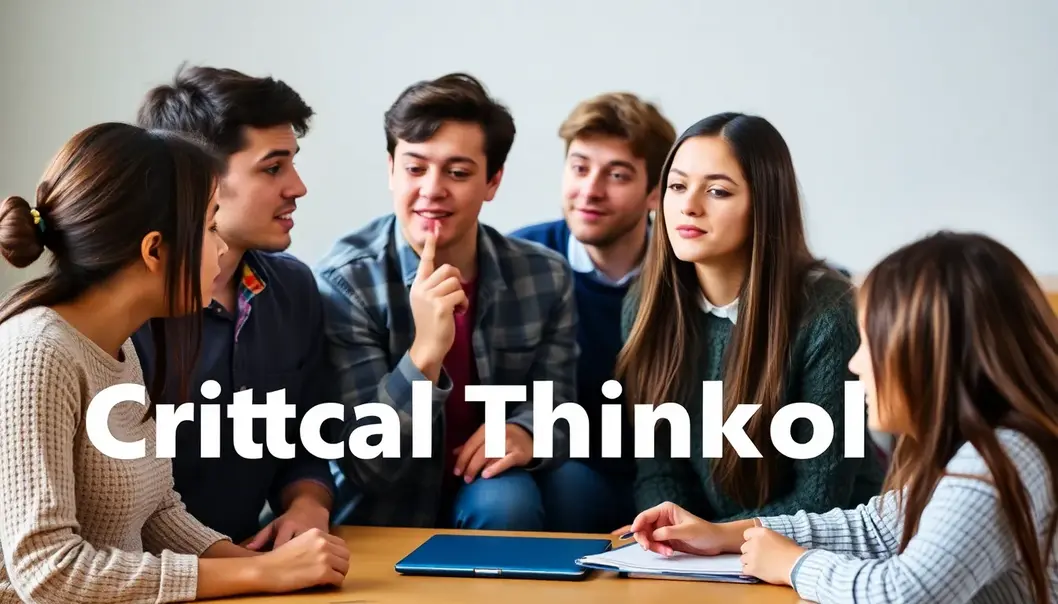High school is a pivotal time for developing skills that prepare students for future challenges. Among these, critical thinking stands out as essential. It equips students with the ability to analyze situations, make informed decisions, and solve complex problems. As busy professionals, understanding and promoting these skills can ensure students better meet the demands of a nuanced world. Encouraging critical thinking in education goes beyond rote learning and nurtures adaptability and creativity, crucial traits in any field. This article explores practical approaches to instill critical thinking skills in high school students, promising them not just academic success, but a robust foundation for lifelong learning.
Integrating Critical Thinking in Curriculum

Embedding critical thinking into the high school curriculum requires a purposeful reimagining of how we engage with traditional subjects. By transforming interactions within math, literature, and science, educators can foster a culture that emphasizes analysis, evaluation, and thoughtful debate.
In mathematics, critical thinking can be nurtured by shifting the focus from rote learning to problem-solving. Instead of merely solving equations, students can be challenged with real-world problems that require multi-step reasoning. For instance, applying mathematical models to predict trends can deepen understanding and encourage students to question underlying assumptions. Teachers might ask, What happens to these trends over time? or How would this model apply in a different scenario? Such questions prompt students to think beyond the numbers, cultivating a nuanced understanding of mathematical applications.
Turning to literature, educators can engage students in critical thinking by exploring multiple perspectives within texts. This can be facilitated through discussions and debates on the motivations of characters or the implications of thematic elements. Through these analyses, students learn to question authorial intent and societal context. For example, when discussing a classic novel, an educator might pose the question: How might the story change if told from another character’s viewpoint? This question encourages students to explore narrative bias and develop empathy, two essential components of critical thinking.
Science offers fertile ground for inquiry-based learning, which naturally aligns with critical thinking skills. Teachers can design experiments where outcomes are not predetermined, allowing students to form hypotheses, conduct experiments, and adjust their understanding based on results. A science teacher might propose, What other factors might affect the outcome of this experiment? This approach not only engages curiosity but also builds resilience in the face of failure, key aspects of analytical prowess.
To cultivate a questioning culture, educators must create an environment where inquiry is welcomed and valued. This involves framing the classroom as a space for exploration and dialogue. Being intentional about asking open-ended questions and modeling critical thinking behaviors can inspire students to adopt similar approaches. An effective strategy is to implement project-based learning, where students undertake projects addressing real-world issues. This modality offers practical applications of interdisciplinary skills, encouraging students to synthesize information across different subjects. For instance, a project on climate change could integrate scientific analysis, mathematical statistics, and persuasive writing.
Moreover, interdisciplinary approaches foster connections between subjects, affirming that complex problems often require diverse skill sets. Projects could unite disciplines like math and social studies to analyze data in understanding historical events. Such integrations demonstrate the interconnectedness of knowledge and the importance of critical thinking in navigating the complexities of future challenges.
By embedding critical thinking into the curriculum, schools can better prepare students for the complexities of the modern world without overwhelming them with unnecessary compartmentalization. An education system that encourages the blending of analytical skills across subjects creates a seamless transition from classroom theory to real-world application.
Extracurricular Activities that Enhance Critical Thinking

Extracurricular activities offer students unique opportunities to cultivate critical thinking skills in dynamic, less structured environments. Activities such as debate clubs, science fairs, and coding groups provide platforms where students can engage in creative and analytical thinking, shaping a deeper understanding of various subjects.
Debate clubs, for instance, require students to research, construct arguments, and anticipate counterarguments. This process fosters analytical thinking, as students must evaluate sources and consider multiple perspectives. The necessity to form coherent arguments on diverse topics helps students develop skills in synthesizing information and thinking on their feet. As they defend their positions and question opponents’, students learn the importance of critical evaluation and effective communication—skills crucial for making informed decisions in real-world settings.
Similarly, science fairs offer a hands-on approach to critical thinking. By engaging in scientific inquiry, students learn the scientific method, from hypothesis formation to experimentation and analysis. These activities encourage them to ask questions, consider variables, and draw conclusions based on evidence. Participation in science fairs challenges students to solve problems creatively and to communicate their findings effectively, which are vital skills in any field they might pursue.
Coding groups highlight the iterative nature of problem-solving. As students write and debug programs, they engage in logical thinking and learn to break down complex problems into manageable parts. The process of coding involves constant evaluation and tweaking to improve outcomes, teaching resilience and adaptability. These groups provide a collaborative environment where peer feedback can spark new ideas, leading to innovative solutions.
Each of these activities instills a mindset of inquiry and exploration, essential for thriving in a complex future. By engaging in extracurricular pursuits, students develop skills that transcend academic subjects, preparing them to tackle real-world challenges with confidence and creativity.
Final words
Developing critical thinking in high school students is imperative for their future success. By integrating these skills into the curriculum and through extracurricular activities, we prepare them to navigate a complex world. Encouraging an environment where questioning and analysis are valued fosters students who are not only knowledgeable but also adept at problem-solving and innovation. As we engage in this educational commitment, the benefits extend beyond academic performance, making students lifelong learners and adaptable thinkers.
Empower your students with cutting-edge learning techniques. Visit us to discover innovative educational strategies that nurture critical thinkers.
Learn more: https://www.eduleadership.com/critical-thinking
About us
EduLeadership provides educational consultancy that specializes in integrating critical thinking skills into school curricula. Our approach includes teacher training, curriculum development, and strategic implementation plans, ensuring that institutions are equipped to meet the demands of modern education. By working with us, schools empower students to become effective problem-solvers and innovators.

